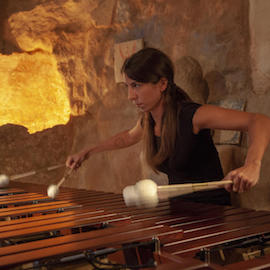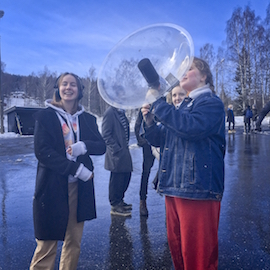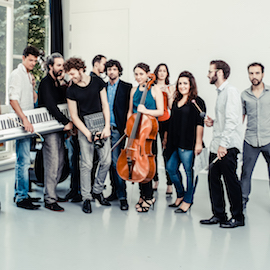ULYSSES Audience Research Blog #3 – Aldeburgh Festival at Snape Maltings, Suffolk (UK)
06/2017 Snape Maltings – UK
My next ULYSSES Audience Research stop brought me to a particularly special setting: Snape Maltings, the home of Aldeburgh Music, a concert hall and creative campus in the heart of the Suffolk countryside on England’s East coast.
Each summer, this distinctive cultural centre hosts the Aldeburgh Festival, primarily a classical music festival but one that has always maintained a strong connection to contemporary music and the promotion of new work. It was founded by Benjamin Britten in 1948 and a number of his pieces were premiered at the festival, alongside premieres by a host of prominent composers from the past few decades (among them Michael Tippett, John Taverner, Elliot Carter and Aaron Copland) and established classical repertoire.
Given that a mixture of old and new has always been part of the fabric of the Aldeburgh festival, the ULYSSES Audience Research Survey was distributed at two concerts here:
one with a clear contemporary music focus and one featuring predominantly classical repertoire (this will be/has been done at two other partners, read more here).
The contemporary concert by the London Sinfonietta on June 10th was a showcase of works by Austrian composer, Olga Neuwirth. It included the UK premiere of her Film Music War Requiem, a score to be performed against the backdrop of the silent movie, Maudite soit la guerre, a Belgian anti-war film from 1914. The survey got a great response from the audience, with a return of about 50% of all attendees. The audiovisual Film Music War Requiem appears to have been the most popular work on the programme, with many audience members mentioning that the film contributed a lot to their enjoyment of the concert. This hints at a particular strength audiovisual works may have in connecting with audiences, in that they can offer a more immersive experience but also a more familiar one for audience members who attend concerts in the classic concert hall format less frequently or who tend to engage with film or TV more often than just with music.
The surveyed classical concert by the Belcea Quartet and Jörg Widmann took place later that evening, featuring a programme of Haydn, Mozart and Britten. Here, my aim was to establish what regular attendees of classical repertoire concerts think about current classical music and what might put them off attending concerts with new works. I’ve yet to delve properly into the many responses but a broad range of attitudes is already detectable: everything from finding contemporary classical music to be ‘rather a racket’, ‘written without regard for the audience’ or ‘puzzling’ to seeing it as ‘exciting’ and ‘unpredictable’. Looking forward to getting further into the data!
Highlights: Aldeburgh Music Festival 2017 (Opening Days)
- – The result of a collaboration between a pair of architects and the composer Freya Waley-Cohen, the interactive Permutations installation was shown at the first week of the festival. The Jerwood Kiln Studio had been divided into a number of small wooden chambers that could be divided further, closed off or opened up by visitors by moving adjustable panels as they walked through the space. Both within and outside of the individual chambers, different lines of Waley-Cohen’s contrapuntal composition for solo violin could be heard over loudspeaker. I felt myself being taken into the composition in a unique way; by being allowed to continually adjust the acoustic setting, I became a very active listener, able to choose which perspective I wanted to take on the piece next. This ability to manipulate the work extended beyond the acoustic to being able to define your own preferred social context for listening to the music – being shut off from others in seated contemplation vs. moving through a more open, ‘communal’ area. A playful, tactile listening experience and a great way to get audiences engaged with acoustics and spatialisation in music.
- – While the silent film was of itself just a fascinating artefact, Neuwirth’s score for A Film Music War Requiem certainly held its own, at times drawing on moods, settings and actions in the film, at times providing thoughtful dissonances with the visual messages. The scoring for small ensemble was imaginative and timbrally creative, mixing cowbells (supplied to practically all ensemble members), a prominent bass clarinet, bowed electric guitar and synthesiser with strings and brass.
- – The evening concert on June 10th by the Belcea Quartet had Britten’s final string quartet (No. 3) on the programme, a work that had its premiere at Snape Maltings shortly after the composer’s death. A particular favourite of mine, its five movements traverse many musical forms and it was given an expressive, sensitive interpretation by the quartet.
Gina Emerson




